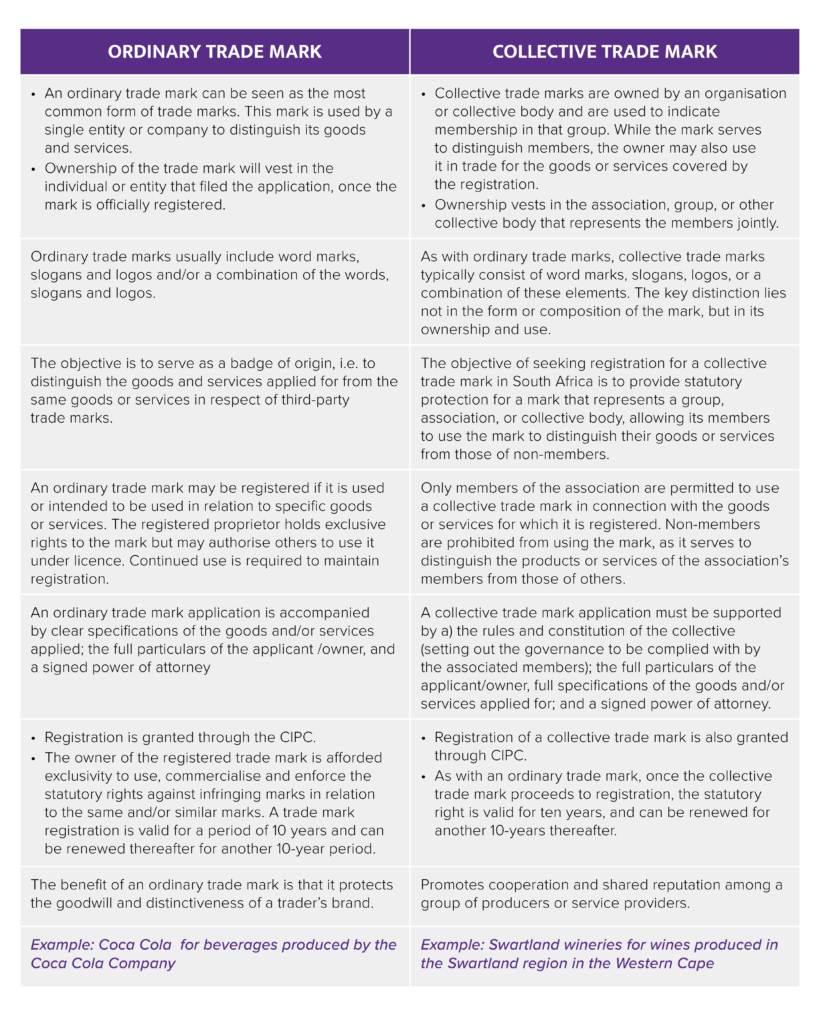- within Intellectual Property topic(s)
- in United States
- within Tax, Finance and Banking and Consumer Protection topic(s)
Choosing between an ordinary trade mark and a collective trade mark comes down to how your brand will be used in the real world.
If you're a single business wanting exclusive control over a name, logo or slogan for your own goods or services, an ordinary mark is usually the right fit.
If you're an association, group or industry body that wants its members to use a shared badge to signal standards, origin or membership, a collective mark can protect that common identity while keeping non-members out.
The table below sets out the practical differences – ownership, purpose, application requirements at CIPC, who may use the mark, and what protection you get – so you can match the option to your brand strategy.

As a quick rule of thumb: Pick an ordinary trade mark to ring-fence your business's brand and goodwill; choose a collective trade mark when a single owner represents many members who will use one mark under published rules.
Before filing, confirm who will own the mark, how it will be used (by you alone or by members), and how licensing, enforcement and renewals (every 10 years) will be managed.
If you're an association, make sure your constitution and member-use rules are clear and enforceable – those documents do the heavy lifting for a collective mark.
The content of this article is intended to provide a general guide to the subject matter. Specialist advice should be sought about your specific circumstances.


